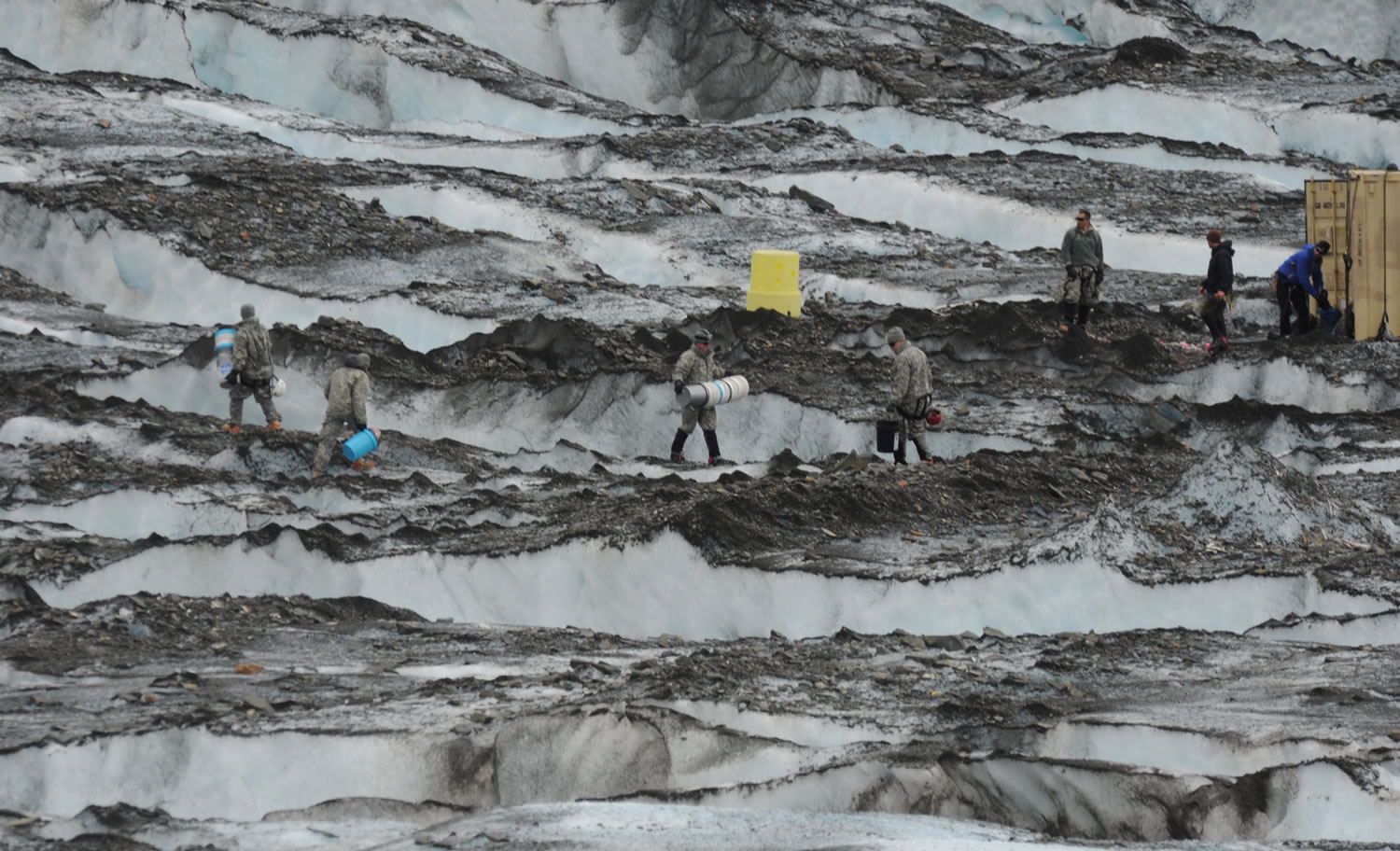The military on Wednesday identified 17 of the 52 people onboard a C-124 Globemaster that crashed into a mountain outside Anchorage, Alaska, on Nov. 22, 1952. The crash site was rediscovered two years ago, and testing has confirmed the identities of about a third of those onboard. The military says the bodies of the other 35 crewmembers have not yet been recovered. The Department of Defense has released names and ranks for the service members, but not hometowns. Identified by military branch were:
U.S. Army: Lt. Col. Lawrence S. Singleton, Pvt. James Green Jr. and Pvt. Leonard A. Kittle.
U.S. Marine Corps: Maj. Earl J. Stearns.
U.S. Navy: Cmdr. Albert J. Seeboth
U.S. Air Force: Col. Noel E. Hoblit, Col. Eugene Smith, Capt. Robert W. Turnbull, 1st Lt. Donald Sheda, 1st Lt. William L. Turner, Tech. Sgt. Engolf W. Hagen, Staff Sgt. James H. Ray, Airman 1st Class Marion E. Hooton, Airman 2nd Class Carroll R. Dyer, Airman 2nd Class Thomas S. Lyons, Airman 2nd Class Thomas C. Thigpen and Airman 3rd Class Howard E. Martin.
Source: U.S. Department of Defense
ANCHORAGE, Alaska — The remains of about a third of the service members who died when their military transport plane crashed into an Alaska mountain and then was buried for decades in glacier ice have been identified, military officials said Wednesday.



